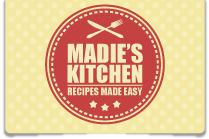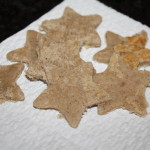Use this guide to find out what and how much to feed your child in the first year. The amounts are meant as rough guidelines only, so don’t worry if your little one eats a bit more or less than shown. It’s a good idea to discuss your solid feeding plan with your child’s doctor before getting started. Always listen to your doctor first. *These are only suggestions.
You don’t have to introduce foods to your child in any special order. If you want to give your baby a taste of tofu at age 6 months, go ahead, even though it’s not listed on our chart until age 8 months. And while cereal is a traditional first food in the United States, it’s just fine to start with mashed fruits or vegetables instead.
Feeding behavior
· Rooting reflex helps your baby turn toward a nipple to find nourishment
What to feed
· Breast milk or formula ONLY
Feeding tip
· Your baby’s digestive tract is still developing, so solid food is off-limits for now.
Signs of readiness for solid food
Your baby probably won’t do all these things – they’re just clues to watch for.
· Can hold head up
· Sits well in highchair
· Makes chewing motions
· Shows significant weight gain (birth weight has doubled) and weighs about 13 pounds or more
· Shows interest in food
· Can close mouth around a spoon
· Can move food from front to back of mouth
· Can move tongue back and forth, but is losing tendency to push food out with tongue
· Seems hungry after 8 to 10 feedings of breast milk or 40 oz. of formula in a day
· Is teething
What to feed
· Breast milk or formula, PLUS
· Pureed food (like sweet potatoes, squash, apples, bananas, peaches, or pears) or semi-liquid iron-fortified cereal
How much per day
· Begin with about 1 teaspoon pureed food or cereal. Mix cereal with 4 to 5 teaspoons breast milk or formula (it’ll be very runny).
· Increase to 1 tablespoon of pureed food, or 1 tablespoon of cereal mixed with breast milk or formula, twice a day. If giving cereal, gradually thicken the consistency by using less liquid.
Feeding tips
· If your baby won’t eat what you’re offering on the first try, offer it again in a few days.
Age: 6 to 8 months
Signs of readiness for solid food
· Same as 4 to 6 months
What to feed
· Breast milk or formula, PLUS
· Pureed or strained fruits (banana, pears, applesauce, peaches)
· Pureed or strained vegetables (avocado, well-cooked carrots, squash, and sweet potato)
· Pureed meat (chicken, pork, beef)
· Pureed tofu
· Small amounts of unsweetened yogurt (but no cows’ milk until age 1)
· Pureed legumes (black beans, chickpeas, edamame, fava beans, black-eyed peas, lentils, and kidney beans)
· Iron-fortified cereal (oats, barley)
How much per day
· 1 teaspoon fruit, gradually increased to 1/4 to 1/2 cup in 2 or 3 feedings
· 1 teaspoon vegetables, gradually increased to 1/4 to 1/2 cup in 2 or 3 feedings
· 3 to 9 tablespoons cereal, in 2 or 3 feedings
Feeding tips
· Introduce new foods one at a time, with at least three days in between to make sure your baby’s not allergic.
Signs of readiness for solid and finger foods
· Same as 6 to 8 months, PLUS
· Picks up objects with thumb and forefinger
· Can transfer items from one hand to the other
· Puts everything in his mouth
· Moves jaw in a chewing motion
What to feed
· Breast milk or formula, PLUS
· Small amounts of soft pasteurized cheese and cottage cheese
· Mashed fruits and vegetables (bananas, peaches, pears, avocados, cooked carrots, squash, potatoes, sweet potatoes)
· Finger foods (small pieces of ripe banana; scrambled eggs; well-cooked and cut up yellow squash, peas, and potatoes; well-cooked spiral pasta; teething crackers; low-sugar O-shaped cereal; lightly toasted bagels, cut up)
· Small amounts of protein (eggs; pureed meats, poultry, and boneless fish; tofu; well-cooked and mashed beans with soft skins like lentils, split peas, pintos, black beans)
· Iron-fortified cereal (barley, wheat, oats, mixed cereals)
How much per day
· 1/4 to 1/3 cup dairy (or 1/2 oz. cheese)
· 1/4 to 1/2 cup iron-fortified cereal
· 1/4 to 1/2 cup fruit
· 1/4 to 1/2 cup vegetables
· 1/8 to 1/4 cup protein foods
Feeding tip
· Introduce new foods one at a time, with at least three days in between to make sure your baby’s not allergic.
Signs of readiness for additional solid food
· Same as 8 to 10 months, PLUS
· Swallows food more easily
· Has more teeth
· No longer pushes food out with tongue
· Is trying to use a spoon
What to feed
· Breast milk or formula PLUS
· Soft pasteurized cheese, yogurt, cottage cheese (but no cows’ milk until age 1)
· Fruit cut into cubes or strips, or mashed
· Bite-size, soft-cooked vegetables (peas, carrots)
· Combo foods (macaroni and cheese, casseroles)
· Protein (egg; pureed or finely ground meats, poultry, and boneless fish; tofu; well-cooked and mashed beans)
· Finger foods (lightly toasted bread or bagels, small pieces of ripe banana; scrambled eggs; well-cooked and cut up yellow squash, peas, and potatoes; spiral pasta; teething crackers; low-sugar O-shaped cereal; )
· Iron-fortified cereals (barley, wheat, oats, mixed cereals)
How much per day
· 1/3 cup dairy (or 1/2 oz. cheese)
· 1/4 to 1/2 cup iron-fortified cereal
· 1/4 to 1/2 cup fruit
· 1/4 to 1/2 cup vegetables
· 1/8 to 1/4 cup combo foods
· 1/8 to 1/4 cup protein foods
Feeding tip
· Introduce new foods one at a time, with at least three days in between to make sure your baby’s not allergic.








Recent Comments